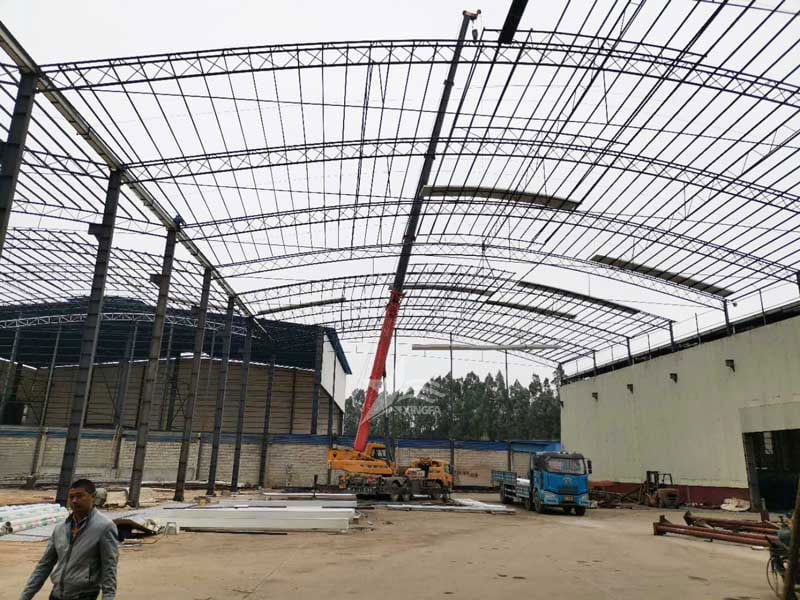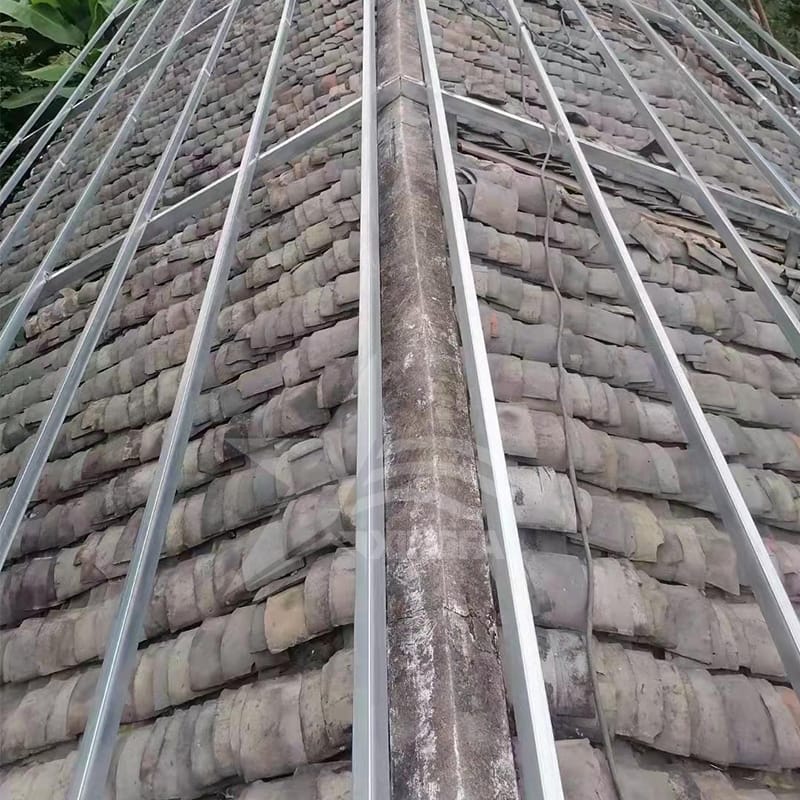When installing a PVC tile roof frame, it’s essential to take several precautions to ensure a safe and successful installation process. Here are some key precautions to consider:

- Structural Integrity: Before installing the PVC tile roof frame, ensure that the underlying structure of the roof, such as rafters, trusses, or joists, is structurally sound and capable of supporting the weight of the frame and roofing materials. If there are any concerns about the structural integrity, consult with a qualified structural engineer or roofing professional.

- Weather Conditions: Choose a day with favorable weather conditions for the installation, avoiding high winds, heavy rain, or extreme temperatures. Inclement weather can compromise the safety of the installation process and the quality of workmanship.
- Safety Gear: Wear appropriate personal protective equipment (PPE), including gloves, safety glasses, and sturdy footwear, to protect yourself from potential hazards during the installation process. Additionally, use fall protection equipment such as harnesses and lanyards when working at heights.
- Lifting and Handling: Exercise caution when lifting and handling the UPVC tile roof frame components to prevent strain or injury. Use proper lifting techniques, such as bending at the knees and keeping the back straight, and enlist the help of additional personnel or equipment as needed.
- Tools and Equipment: Use the right tools and equipment for the job, including drills, saws, fasteners, and measuring devices. Ensure that tools are in good working condition and used according to manufacturer instructions to minimize the risk of accidents or damage to materials.
- Proper Installation: Follow the manufacturer’s instructions and recommended installation procedures for assembling and installing the PVC tile roof frame. Pay attention to details such as spacing, alignment, and fastening methods to ensure a secure and stable frame structure.
- Ventilation: Ensure proper ventilation in the roof space by incorporating vents or ventilation systems into the frame design. Adequate ventilation helps prevent moisture buildup, condensation, and heat accumulation, which can affect the performance and lifespan of the roofing materials.
- Waterproofing: Take precautions to waterproof the roof frame and flashing details to prevent water infiltration and leaks. Use appropriate sealants, flashing materials, and waterproof membranes to create a watertight barrier around penetrations, joints, and transitions.
- Quality Control: Conduct regular inspections and quality control checks during the installation process to identify any defects, deficiencies, or safety hazards. Address any issues promptly and ensure that workmanship meets industry standards and regulatory requirements.
- Professional Assistance: If you’re not comfortable or experienced with installing PVC tile roof frames, consider hiring a professional roofing contractor or installer with expertise in working with PVC roofing materials. They can ensure proper installation and adherence to safety standards, ultimately delivering a high-quality and reliable roofing system.

By following these precautions and best practices, you can help ensure a safe, efficient, and successful installation of a PVC tile roof frame, providing a solid foundation for the roofing materials and long-term protection for your property.
